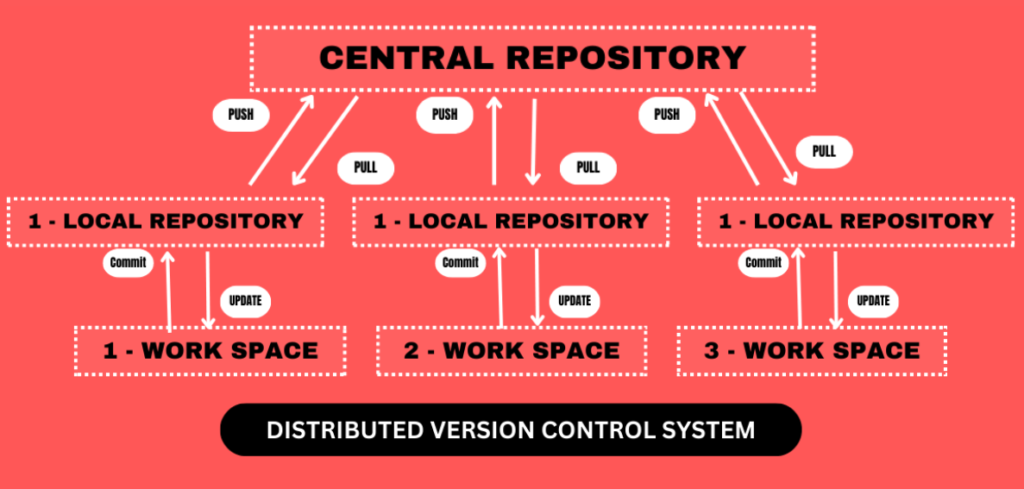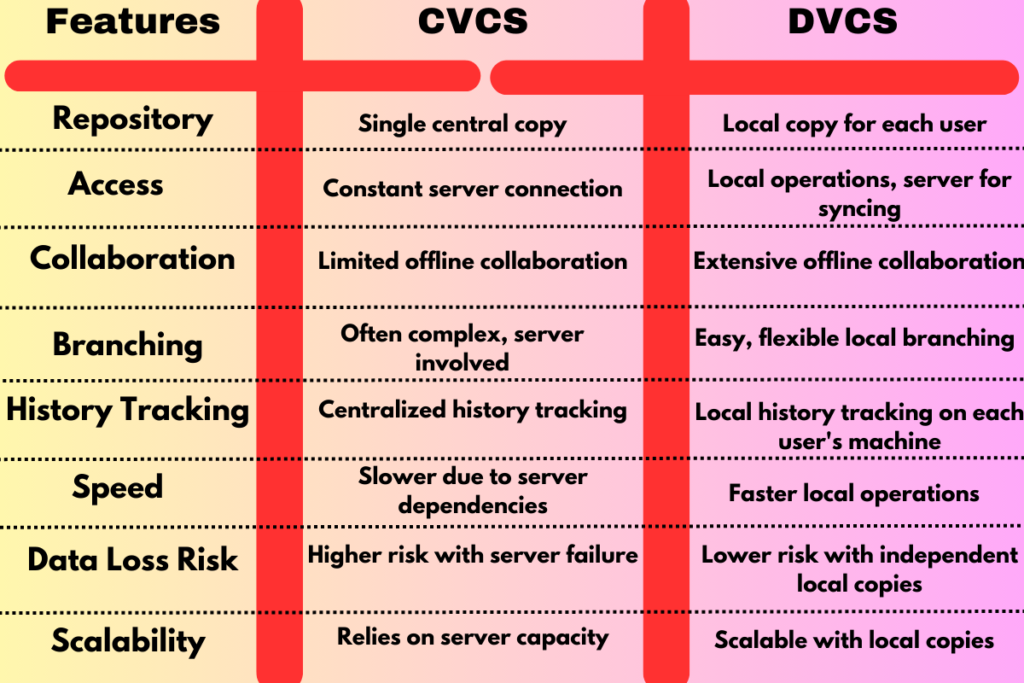Choosing between Centralized vs Distributed Version Control Systems (CVCS and DVCS) is a critical decision that must be made before beginning the collaborative software development process. Systems like CVCS and DVCS, which stand for these VCS types, are essential for monitoring changes to project-related files, documentation, and source code. A complex landscape is created by the specific characteristics, benefits and drawbacks of each system. The blog looks into the complicated nature of these systems, providing thorough insights to enable you to make an informed choice for your development projects.
Table of Contents
Introduction
Version control is the foundation of collaborative project development. It is a lengthy method of monitoring and controlling changes to documents, code, or any set of files across time. This crucial procedure maintains an organized history of changes while enabling smooth collaboration among multiple individuals. The choice in “Centralized vs Distributed Version Control System” becomes fundamental in the context of version control, affecting the efficiency and versatility of development workflows as well as the collaborative environment.
What is CVCS ?

In a Centralized Version Control System, all the project information is stored in one central location, often on a server. Imagine this central server as a big library that holds the entire history of a project. When developers want to work on a piece of code, they “check out” a copy from this central library to their own computer. It’s like borrowing a book from the library to read.
Now, the developer can make changes to the code on their own computer, like adding new features or fixing bugs. Once they are done with their changes, they “check in” the updated code back to the central server. It’s akin to returning the borrowed book to the library.
Benifits of CVCS
- Team Coordination:- Because everyone is using the same central repository, it’s easy for team members to know what others are working on. It’s like everyone consulting the same library catalogue to see which books are checked out or available.
- Simplicity:- For smaller projects or teams, CVCS can be simpler to manage. It’s like having a small library that’s easy to organize.
Drawbacks of CVCS
- Single Point of Failure:- If the central server fails, everything stops, causing work disruptions and potential data loss during server issues.
- Limited Offline Functionality:- Requiring a constant connection for various tasks makes it challenging to work offline, impacting productivity, especially in remote areas.
When to Choose CVCS ?
- Suitable for smaller teams.
- Simplifies coordination through a central repository.
- May face challenges in geographically distributed or asynchronous work settings.
Key Features of CVCS
- A single central repository.
- Collaboration facilitated through the central server.
- Access control and permissions.
Examples of CVCS
What is DVCS ?

In a Distributed Version Control System, things work a bit differently compared to a centralized system. Imagine every developer having their own personal copy of the entire project’s history on their computer. It’s like giving each person their own complete set of books from the library.
So, instead of relying on a central server, each developer has their “local repository,” which is like their personal library with all the project’s information. They can make changes, add new chapters, or fix errors directly in their own library.
Benifits of DVCS
- Independence:- Each developer can work independently on their part of the project without needing a constant connection to a central server. It’s like being able to read and write in your own set of books at any time, even if the library is closed.
- Better Collaboration:- When developers want to share their changes or updates with others, they can “sync” or “merge” their local libraries with each other. It’s like exchanging notes or combining everyone’s edits into one master version.
Drawbacks of DVCS
- Potential for Conflicts:-
Independent work in DVCS may lead to merging conflicts, requiring extra effort to resolve and potentially slowing down collaboration. - Increased Storage Requirements:-
Each developer maintaining a full repository copy in DVCS can increase storage needs, especially in projects with large files.
When to Choose DVCS ?
- Ideal for geographically distributed teams.
- Allows independent, parallel development.
- Well-suited for open-source projects with diverse contributors.
Key Features of DVCS
- Local repositories for each developer.
- Collaboration without a central server.
- Offline access and autonomy.
Examples of DVCS
Differences - Centralized vs Distributed Version Control Systems

Key Variances - Centralized vs Distributed Version Control System
- Collaboration and Access to Repositories –
CVCS relies on a central server for collaboration, while DVCS allows developers to work independently and merge changes later. - Offline Capabilities –
DVCS enables offline work, allowing developers to commit changes locally before syncing with the central repository. CVCS typically requires a constant connection to the central server. - Performance and Speed –
DVCS often offers faster performance since developers can access local repositories. CVCS may experience slowdowns as the project size and team grow. Explain up to 100 character
Conclusion
In the debate of Centralized vs Distributed version control systems, the decision boils down to what your project needs. CVCS is simple and great for straightforward work, while DVCS is flexible and excels in collaborations. To decide, look at your team’s needs and project size. This helps you make a smart choice that fits your goals, making work smoother from start to finish.
FAQ's
- What is the main advantage of DVCS over CVCS?
Ans – DVCS allows developers to work independently and collaboratively without a constant connection to a central server. - Can a team use both CVCS and DVCS simultaneously?
Ans – While unconventional, it is possible to use both systems for different projects within a team. - How does DVCS handle conflicts in code?
Ans – DVCS provides tools to manage and resolve conflicts during the merging process.
